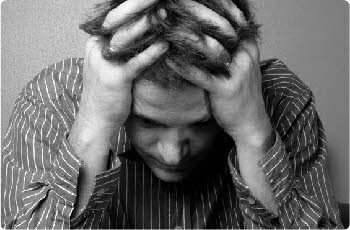Depression is a Mental Disorder, not a Disease
There are plausible arguments for the non-existence of mental illness. But there are still people who declare themselves to have a mental illness. After all, being sick mentally has no physical symptoms; it’s not like a kidney stone or an inflamed appendix. One can only hope it was this simple.
Yet depression is a progressive and debilitating disorder. It is like having a ‘bruised brain’ that refuses to heal. There is an substantial list of psychological disorders. Technically depression is a mood disorder that has a series of symptoms. These symptoms are the evidence that something is definitely wrong.
- Depressed mood (such as feelings of sadness or emptiness).
- Reduced interest in activities that used to be enjoyed.
- Change in appetite or weight increase/decrease.
- Sleep disturbances (either not being able to sleep well or sleeping too much).
- Feeling agitated or slowed down.
- Fatigue or loss of energy.
- Feeling worthless or excessive guilt.
- Difficulty thinking, concentrating or troubles making decisions.
- Suicidal thoughts or intentions.
http://www.nami.org/
The above list is a summary of something called the DSM-IV which doctors use to diagnose the mental disorder of depression. Having five or six of these may indicate a problem. Spinning off this, you will discover some other disorders, like:
- Generalized anxiety disorder (GAD)
- Panic disorder
- Depersonalization/derealization
- OCD (obsessive compulsive disorder)
- Psychosis and paranoia
- PTSD (post traumatic stress syndrome)
- Specific Phobias (fears of something)
- SAD (social anxiety disorder)
- Schizophrenia
- Eating disorders (bulimia, anorexia)
Even though mental illness is widespread in the population, the main burden of illness is concentrated in a much smaller proportion-about 6 percent, or 1 in 17 Americans-who live with a serious mental illness. The National Institute of Mental Health reports that one in four adults–approximately 57.7 million Americans–experience a mental health disorder in a given year.
Unfortunately, there is a great deal of misunderstanding and stigma for those who have these disorders. I suppose it is akin to having VD (venereal disease) or AIDS. It seems that our culture is pretty quick at labeling people as deviant or undesirable.
I hope this post helps. I can see a 100 holes in it, and alas, it is a meager attempt. But perhaps it will be of some value. Both NAMI.org, Psychcentral.com, and WebMD.com all have excellent info on Mental Illness. 









